 February 19, 2015 John E. Ross, KD8IDJ, Editor
| |||||||||||
ARRL Warns Experimental Licensee to Avoid Interference to HF Ham Activity The ARRL has asked a Massachusetts company that plans to conduct experimental transmissions over wide portions of the HF spectrum either to avoid Amateur Radio allocations or to announce the times and frequencies of their transmissions in advance. The FCC last fall granted MITRE Corporation of Bedford, Massachusetts, a 2-year Part 5 Experimental License, WH2XCI, to operate 21 transmitters at 10 fixed New York and Massachusetts sites. MITRE plans to test wideband HF communication techniques on a variety of bands between 2.5 MHz and 16 MHz.
Imlay said that if MITRE does not agree to avoid ham radio bands or to announce times and frequencies of transmissions ahead of time, it will ask the FCC to rescind the company's Experimental License or to impose a prior notification requirement "in real time for each and every use of the transmitters authorized at each site." The WH2XCI Experimental License authorizes maximum bandwidths of 5 kHz, 500 kHz, and 1 MHz at effective radiated power levels of 6 W, 24 W, or 122 W. MITRE has indicated that most bandwidths would be between 100 and 300 kHz. "At these power levels with the operating parameters proposed, it will be impossible to conduct your tests at any time within the Amateur Radio allocations and, at the same time, avoid harmful interference," Imlay said. He noted that MITRE already conceded this point in a technical exhibit submitted to the FCC with respect to its 1 MHz bandwidth mode.
Imlay said that when interference from MITRE's wide-bandwidth transmitters "inevitably occurs in the narrow-bandwidth, sensitive receivers" hams use, amateur licensees will have no way to determine the source of the interference or know to whom they might complain. "Thus, your assurance of operation on a 'non-interference basis' is meaningless under the circumstances, and yet that is both a special condition of operation" of the WH2XCI license and under FCC Part 5 regulations, Imlay told MITRE. "It is ARRL's intention to ensure that this experimental authorization, improvidently granted to the extent that it includes heavily used Amateur Radio allocations, is not permitted to cause interference to ongoing Amateur Radio HF communications," Imlay concluded. MITRE obtained the Experimental License to investigate high data rate wideband HF communication systems. US to Propose Additional Sharing of 10 GHz Band at WRC-15 The US proposal for World Radiocommunication Conference 2015 (WRC-15) Agenda Item 1.12 -- to expand the Earth Exploration Satellite Service (EESS) in the vicinity of 10 GHz -- supports allocating an additional 600 MHz of spectrum to the EESS (active) as a "In this hotly contested frequency range, the best we can hope for is that sharing partners will be compatible with continued amateur access, and that is the case here," ARRL CEO David Sumner, K1ZZ, commented. The US proposal does not include adding the United States to a "country footnote" that allocates the 10.0-10.45 GHz band to the fixed service in some Region 2 countries -- a position advocated by Mimosa Networks and strongly opposed by the ARRL. Mimosa Networks had petitioned the FCC to allow wireless broadband services in the band, which the ARRL has also strongly opposed. The US proposal includes a provision that recognizes the Amateur-Satellite Service. "This proposal ensures that secondary Amateur-Satellite service operations in the frequency band 10.45-10.5 GHz that are advance published prior to the date of entry into force of the primary EESS (active) allocation in 9900-10,500 MHz are treated on a co-equal basis with EESS (active) operations," the US position states. After that date, presumed to be January 1, 2017, new stations in the Amateur-Satellite Service would be considered secondary to the EESS.
EESS use of the 9900-10,500 MHz band would be limited to systems requiring necessary bandwidths greater than 600 MHz that cannot be fully accommodated within the 9300-9900 MHz band. ARRL Chief Technology Officer Brennan Price, N4QX, has been advocating on behalf of positions favorable to Amateur Radio at WRC-15 during the US preparatory process. He notes that administrations in Europe generally favor an EESS allocation down to 9.2 GHz and up to 10.4 GHz, sparing the Amateur Satellite segment. A US proposal on WRC-15 Agenda Item 1.4, involving the possibility of an Amateur Radio allocation in the vicinity of 5 MHz, has not been finalized. US proposals on WRC-15 agenda items that already have been agreed upon are available on the National Telecommunications and Information Agency (NTIA) website. Each proposal represents the US position on WRC-15 agenda items for possible changes to the international Radio Regulations. FCC "Paperless" Amateur Radio License Policy Now in Effect Effective February 17, the FCC no longer routinely issues paper license documents to Amateur Radio applicants and licensees. The FCC will continue to provide paper license documents to all licensees who notify the Commission that they prefer to receive one, but what arrives in the mail now will be printed on plain white recycled paper, instead of the more distinctive stock the FCC had been using until recently. All of this is part of the FCC's efforts to streamline procedures and save money.
The Commission has maintained for some time now that the official Amateur Radio license authorization is the electronic Universal Licensing System (ULS) record, although the FCC had routinely continued to print and mail hard copy licenses until this week. In mid-December, the FCC adopted final procedures to provide access to official electronic authorizations, as it had proposed in WT Docket 14-161 as part of its "process reform" initiatives. Under the new procedures, licensees will access their current official authorization ("Active" status only) via the ULS License Manager. Licensees can also print an official license authorization -- as well as an unofficial "reference copy" -- from the ULS License Manager. The ULS License Manager now permits licensees to change the default setting, so that the Bureau will print and mail a license document. ARRL Foundation Announces Two New Scholarships The AR
"He came to Amateur Radio late in life but was active in several clubs in the Atlanta area, where he signed N4IQR, before moving to Pennsylvania for the last decade of his life," President Craigie said. "He packed a lot of fun and many friendships into his few years in Amateur Radio." Cothran died in 1997, a few days shy of turning 84. During World War II, Cothran served in the US Army Signal Corps, assembling military radio stations from boxes of components. "That was good preparation for being a radio amateur," President Craigie said. "Although he did not graduate from college, he encouraged my doing so, and he paid the bill for it," she continued. "In the last years of his life, Amateur Radio was a great shared interest in our family. Put it all together, and it just made sense to name our ARRL Foundation scholarship in his memory." Preference will be given to Cothran scholarship applicants who live in the ARRL Atlantic, Roanoke, or Southeastern divisions. The Huettl Scholarship, which will award $1000 annually to a radio amateur pursuing higher education, was established by the radio amateurs in his family. Huettl died earlier this year. His niece, Connie Mah, NR4CB, said Huettl got interested in ham radio as a teenager, when another ham relative -- as an impromptu demonstration -- brought a radio to Huettl's house, threw a wire over a fence, and began making contacts.
"Fascinated by what his Elmer helped him experience, he learned Morse code and passed his license exams," Mah said. Huettl attended Arizona State University, earning an electrical engineering degree and going on to work in the semiconductor industry for 33 years until his death at age 55. While working in Czech Republic, he held call sign OK8DX. "Dan was a member of ARRL for 37 years, making contacts with hams locally and internationally as a way to relax. Amateur Radio was one way Dan pursued what he was passionate about -- electronics, technology, and, most of all, connecting with people around the world," Mah said. The Huettl scholarship will give preference to applicants attending Arizona State who are pursuing a degree in science, technology, engineering, or mathematics. The ARRL Foundation will administer both scholarships. Descriptions of all scholarships The ARRL Foundation administers are available on the Foundation's web pages. Exit Navassa, Enter Cocos The K1N Navassa Island DXpedition is now a part of ham radio history. The 15-member team wrapped up operations on schedule early on February 15. While some seekers went away empty-handed -- even after hours of trying to break the massive pileups (and some intentional interference) -- thousands were more fortunate. As K1N exited the world stage, another far more modest DXpedition on Cocos Island began operating the next day as TI9/3Z9DX.
Going into the DXpedition, Navassa Island (KP1) was the second most-wanted DXCC entity (after North Korea) on ClubLog's Most Wanted List. Cocos Island is number 25 overall. From startup in the waning hours of February 1 until shutdown on February 15 at 1130 UTC, K1N logged 138,409 contacts with 35,702 unique call signs. A helicopter took the last three members of the DXpedition off the island on February 15 at 1500 UTC. They had remained behind to keep K1N active "until the last possible moment," said team member Glenn Johnson, W0GJ. "There was an excellent opening to Asia/Oceania almost all day and all night during the last 24 hours [of the DXpedition]." Johnson thanked DXers who stood by while K1N worked areas of the world into which it had short propagation windows. "The Jamaica Amateur Radio Association members provided valuable support for all phases of our operation," he added. The US Fish and Wildlife Service (USFWS) oversees access to the small island, and it has indicated that it would not allow any more DXpeditions to Navassa for another decade. A log search engine and detailed contact statistics are on the K1N Navassa Island website.
As was the case with Navassa, access to Cocos Island is restricted. The small Pacific Ocean island is designated as a national park and does not permit inhabitants other than Costa Rican park rangers. Due to new regulations, the DXpedition will not use the TI9A call sign but TI9/3Z9DX. The Cocos Island team, which includes operators from Costa Rica, Poland, and Russia, got off to a late and shaky start, but things have picked up. A storm on February 19 damaged some antennas, since repaired, and HF conditions have not been the best, but the team has uploaded an initial batch of nearly 6000 contacts. Expedition leader Dom Grzyb, 3Z9DX, has asked for patience on the part of DXers hoping to put TI9 into the log, given the size of their "super low-budget" operation and the fact that two members are DXpedition neophytes. Operation from TI9/3Z9DX will be on CW, SSB, and digital modes on all or most HF bands. The team will be on the island until February 23. The island manager has assigned the team to a location that may work to the advantage of North American operators. The group has posted some photos on Facebook. Logs are being uploaded to ClubLog. -- Thanks to The Daily DX ARISS Contact Proposal Window for 2016 Events Now Open The Amateur Radio on the International Space Station (ARISS) program is now accepting applications from formal and informal educational institutions and organizations in the US -- individually or working together -- that would like to host an Amateur Radio contact with an ISS crew member between January 1 and June 30, 2016. Crew scheduling and ISS orbits determine the exact contact dates. The application window closes on April 15.
FM voice contacts with ISS crew members last about 10 minutes -- the typical length of an orbital pass -- and allow students and educators to interact with the astronauts in a question-and-answer format. ARISS contacts afford an opportunity for participants to learn firsthand from astronauts and cosmonauts what it is like to live and work in space, and about ISS research. Students will also have an opportunity to learn about satellite communication, wireless technology, and radio science. Because of the nature of human spaceflight and scheduling complexity, schools and organizations must demonstrate flexibility to accommodate changes in contact dates and times. Details on expectations, audience, proposal guidelines, the proposal form, and dates and times of information sessions are on the ARRL website. E-mail ARISS with any questions. Amateur Radio organizations around the world, NASA, and space agencies in Russia, Canada, Japan, and Europe sponsor this educational opportunity by providing the equipment and operational support to enable communication between ISS crew and students around the world via Amateur Radio. In the US, ARISS is managed by the ARRL and AMSAT, in partnership with NASA. AMSAT-NA Board Approves Seed Money for Technology Development As a part of its "Design The Next AMSAT Satellite" challenge, the AMSAT Board of Directors has approved $5000 as seed money for future satellite development. The Board will also seek additional fund-raising possibilities.
"We're prepared to return to space in 2015 with a fleet of satellites that will equal, if not exceed, the performance, and availability to the average ham, of our previously popular AMSAT OSCAR 51," AMSAT President Barry Baines, WD4ASW, said. "Meanwhile, we are preparing for the future looking to potentially leverage new technologies, to provide the best opportunities for enhancing Amateur Radio's presence in space." The AMSAT Board met in December. AMSAT hopes its Fox-1A CubeSat will be one of its 2015 successes. In January, the CubeSat successfully completed required pre-launch testing, including so-called "shake and bake" vibration and thermal testing. Fox-1A is scheduled to launch in late August on a NASA ELaNa flight . AMSAT has expressed interest in supporting technology ideas that enhance the utility of the CubeSat form factor to support more robust Amateur Satellite capabilities. These could include microwave technology suitable for use in amateur spacecraft and complementary, low-cost ground systems. Another potential enhancement would be attitude determination and control systems that would point a spacecraft's antennas toward the user, while maximizing solar panel production. For more details, contact AMSAT Vice President-Engineering Jerry Buxton, N0JY. Buxton told the Board that construction and testing of five Fox CubeSats continues on schedule. -- Thanks to AMST News Service Ulrich Rohde, N1UL, Wins Second Prestigious IEEE Award Ulrich Rohde, N1UL (ex-KA2WEU), has been named by the Institute of Electrical and Electronics Engineers (IEEE) to receive the prestigious I. I. Rabi Award for 2015. The award recognizes outstanding contributions related to the fields of atomic and molecular frequency standards, and time transfer and dissemination. The author of some 200 scientific papers and books, including several QEX and QST articles, Rohde was cited specifically for "intellectual leadership, selection, and measurement of resonator structures for implementation in high-performance frequency sources, essential to the determination of atomic resonance."
"I am really in disbelief and overwhelmed by this totally unexpected honor close to my 75th birthday," Rohde said in thanking Gregory Weaver, the 2015 Awards Chair of the IEEE International Frequency Control Symposium (IFCS) Standing Committee. "Since the age of 16, I have been fascinated with oscillators as well as their performance and their influence on atomic standards. Some of the results of my research are still the basis of all really high-performance oscillators." Last year Rohde was the recipient of another IEEE IFCS honor, the C.B. Sawyer Memorial Award, which recognizes "entrepreneurship or leadership in the frequency control community; or outstanding contributions in the development, production or characterization of resonator materials or structures." Rohde, who is the chairman of Synergy Microwave Corporation and President of Communications Consulting Corporation, will receive the Rabi Award at the 2015 Joint Conference of the IEEE International Frequency Control Symposium and European Frequency and Time Forum, held April 12-16 in Denver. The award's namesake, physicist Isidor Isaac Rabi, received the Nobel Prize in 1944 for his discovery of nuclear magnetic resonance, which is used in magnetic resonance imaging. Canada Funds Amateur Radio Disaster Assistance Project in Saint Lucia The Government of Canada will provide more than $25,000 (CDN) to the Saint Lucia Amateur Radio Club to improve Amateur Radio coverage and communication in the small Caribbean island nation in the event of a disaster. The project will install two repeater systems including solar backup power, train 90 radio operators, and increase coverage for all of Saint Lucia's 18 districts.
According to the announcement, the Repeater System for the Saint Lucia Amateur Radio Club will provide enhanced two-way communication during normal and disaster conditions, allowing for Amateur Radio coverage in all communities -- and especially in known high-risk areas. "The project will ensure that, in future hazard events, reliable and accurate information can be passed from communities to response teams, leading to more timely and effective assistance to those communities," the announcement said. The Saint Lucia Amateur Radio Club secured support for this project through the Canada Caribbean Disaster Risk Management Fund (CCDRM), part of Canada's $600 million Caribbean Regional Program. The fund is designed to support Caribbean-based non-governmental organizations, community groups, and governmental agencies working at the community level to reduce risks from natural hazards and climate change. -- Thanks to the Canadian High Commission, Bridgetown Hams in Haiti to Build Tower, Promote International Goodwill Dale Long, N3BNA, and others are back in Haiti to oversee the construction of a 300-foot broadcast station antenna and to do a little hamming while there. Long, from Pennsylvania, has been on the air as HH2/N3BNA, and he expects to operate as 4V1JR during the ARRL International DX Contest (CW) over the February 21-22 weekend. The antenna raising is a project of the Haiti International Friendship Amateur Radio Club.
"Our mission is to foster international friendship and promote Amateur Radio in Haiti," the club's website states. The 300-foot tower was shipped from the US to Haiti in sections, each weighing about 340 pounds. It is being installed on a 9-acre semi-marsh near the ocean. Once up, the tower, which will have a complete radial field, will serve a popular radio station that has played a role in disaster relief efforts in Haiti. Long said the radio station has agreed to let the ham radio group use the tower for 160 meters -- presumably during periods when the radio station is off the air -- in exchange for helping to put it up. The entire project is largely supported by donations, and the work is being done by volunteers. Since no trees or a crane were available, the tower team needed to build a second, smaller tower to winch the big tower into place. A lot of the work is being done with rudimentary tools. Long has traveled to Haiti and to Central America to work on similar projects in the past. Contact the club for more information or to volunteer for future projects. Hams Encouraged to Hit the Water for New US Islands Awards "One-Day Getaway" Fans of portable ham radio are encouraged to grab their equipment and head for the water as part of the new "One-Day Getaway," "US Islands is a great way to go on a mini-DXpedition without spending a lot of money," said US Islands Awards Manager Jay Chamberlain, NS4J. "Discovering islands in your own backyard and setting up a station outdoors is always a good time. If hams have only operated outdoors during Field Day, we offer another route to get outside and enjoy portable ham radio in a different way."
The One-Day Getaway is an on-air activity, not a contest. No scores are tallied, and no prizes are awarded. Participation from all radio amateurs, regardless of experience level, is encouraged. Contacts may be made with any station. US Islands offers achievement awards for both island activators and island chasers, including a certificate for your first US Islands activation. While there are some 2800 islands on the US Islands list, there are more than 17000 islands within the US. Participants can use Google Earth to locate new islands and be the first to operate ham radio from those locations. Complete information on the US Islands Program, a how-to guide for One-Day Getaway participants, and a list of currently qualified islands are available on the group's website. In Brief...
The K7RA Solar Update Tad Cook, K7RA, Seattle, Washington, reports: Average daily solar flux and sunspot numbers were down for the second week in a row. Average daily sunspot numbers for January 29 to February 4 were 139, then down to 81.6 the next 7 days, and now 54.6 during the February 12-18 period. The three averages for daily solar flux over the same periods were 151.1, 144.1, and 121.4.
Predicted planetary A index is 8 on February 19, 5 for February 20-21, 12 for February 22-23, then 10, 8, 5, and 10 for February 24-27, 18 for February 28 through March 1, 15 on March 2, 10 for March 3-4, then 5 and 7 on March 5-6, 10 for March 7-8, and 5 for March 9-13. The NOAA Space Weather Prediction Center (SWPC) has announced that it will suspend operations on Saturday, February 21, 1300 to 2000 UTC. During this period the SWPC website will remain in service, but it will not be updated with new data until the outage has concluded. In the event of active space weather or a reasonable chance of active space weather, the maintenance will be postponed. This weekly "Solar Update" in The ARRL Letter is a preview of the "Propagation Bulletin" issued each Friday. The latest bulletin and an archive of past propagation bulletins is on the ARRL website. For Friday's bulletin, look for an updated forecast for the near term and reports from readers, as well as one more article on the infamous 19th century Carrington Event. Send me your reports and observations. -- Tad Cook, K7RA Just Ahead in Radiosport
See the ARRL Contest Calendar for more information. Upcoming ARRL Section, State, and Division Conventions and Events
Find conventions and hamfests in your area.
ARRL -- Your One-Stop Resource for . .
.
Subscribe to...
Free of charge to ARRL members...
| |||||||||||
 "[I]t will not be possible for MITRE to operate these transmitters within the Amateur Radio Service allocations...without causing harmful interference to a large number of Amateur Radio operators on an ongoing basis," ARRL Chief Counsel Chris Imlay, W3KD, said in a February 12 letter to MITRE.
"[I]t will not be possible for MITRE to operate these transmitters within the Amateur Radio Service allocations...without causing harmful interference to a large number of Amateur Radio operators on an ongoing basis," ARRL Chief Counsel Chris Imlay, W3KD, said in a February 12 letter to MITRE.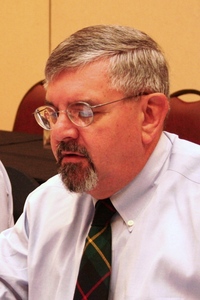
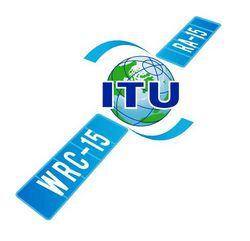 primary allocation in the frequency band 9.9-10.5 GHz, with certain limitations. The Amateur and Amateur-Satellite services have secondary allocations of 10.0-10.5 GHz and 10.45-10.5 GHz, respectively; the only current primary allocation is to Radiolocation. A study conducted by a Working Party of the International Telecommunication Union Radiocommunication Sector (ITU-R) concluded that the interference potential of EESS (active) to Amateur Radio was limited to very brief and infrequent periods.
primary allocation in the frequency band 9.9-10.5 GHz, with certain limitations. The Amateur and Amateur-Satellite services have secondary allocations of 10.0-10.5 GHz and 10.45-10.5 GHz, respectively; the only current primary allocation is to Radiolocation. A study conducted by a Working Party of the International Telecommunication Union Radiocommunication Sector (ITU-R) concluded that the interference potential of EESS (active) to Amateur Radio was limited to very brief and infrequent periods.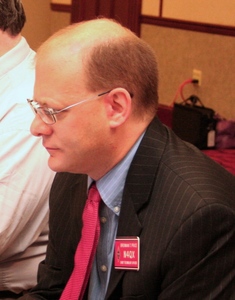
.jpg) "We find this electronic process will improve efficiency by simplifying access to official authorizations in ULS, shortening the time period between grant of an application and access to the official authorization, and reducing regulatory costs," the FCC Wireless Telecommunications Bureau (WTB) said. According to the WTB, the new procedures will save more than $300,000 a year, including staff expenses.
"We find this electronic process will improve efficiency by simplifying access to official authorizations in ULS, shortening the time period between grant of an application and access to the official authorization, and reducing regulatory costs," the FCC Wireless Telecommunications Bureau (WTB) said. According to the WTB, the new procedures will save more than $300,000 a year, including staff expenses.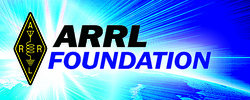 RL Foundation has announced the establishment of two new scholarships -- The James Cothran, KD3NI, Scholarship Fund and The Dan Huettl, WZ7U, Memorial Scholarship Fund. The Cothran scholarship, endowed by his daughter, ARRL President Kay Craigie, N3KN, and her husband Carter, N3AO, will award $2000 annually to a young radio amateur pursuing higher education. President Craigie said her father, a life-long experimenter, had tried unsuccessfully to get her interested in electronics when she was a child.
RL Foundation has announced the establishment of two new scholarships -- The James Cothran, KD3NI, Scholarship Fund and The Dan Huettl, WZ7U, Memorial Scholarship Fund. The Cothran scholarship, endowed by his daughter, ARRL President Kay Craigie, N3KN, and her husband Carter, N3AO, will award $2000 annually to a young radio amateur pursuing higher education. President Craigie said her father, a life-long experimenter, had tried unsuccessfully to get her interested in electronics when she was a child..jpg)
.jpg)
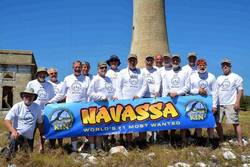
.png)
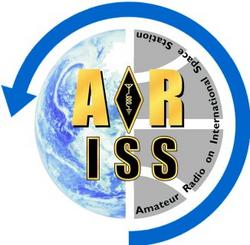 ARISS is looking for organizations that have the potential to draw large numbers of participants and can integrate the contact into a well-developed educational plan.
ARISS is looking for organizations that have the potential to draw large numbers of participants and can integrate the contact into a well-developed educational plan.
.jpg)
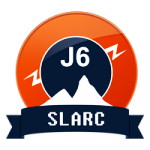 "Rising sea levels, coastal erosion, and an escalation in the frequency and intensity of tropical storms and hurricanes threaten homes and businesses across the Caribbean. These situations can have a significant negative impact on sustainable economic growth and result in loss of life," the Canadian Government said in announcing the grant.
"Rising sea levels, coastal erosion, and an escalation in the frequency and intensity of tropical storms and hurricanes threaten homes and businesses across the Caribbean. These situations can have a significant negative impact on sustainable economic growth and result in loss of life," the Canadian Government said in announcing the grant.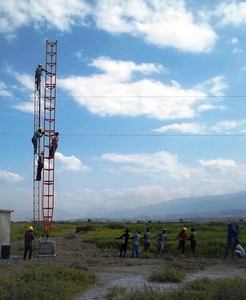
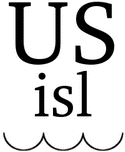 sponsored by the
sponsored by the 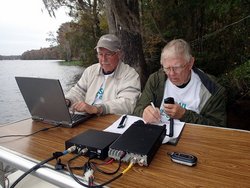
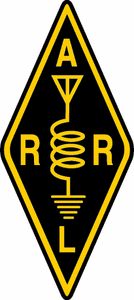 A Reminder -- ARRL International DX Contest 2015 CW Event is February 21-22: CW, DXing, and contesting come together and go global February 21-22 for the 2015
A Reminder -- ARRL International DX Contest 2015 CW Event is February 21-22: CW, DXing, and contesting come together and go global February 21-22 for the 2015 %20from%20ISS-1.png) Slow-Scan Television Transmissions from ISS Set for February 21-23 Amateur Radio on the International Space Station (
Slow-Scan Television Transmissions from ISS Set for February 21-23 Amateur Radio on the International Space Station (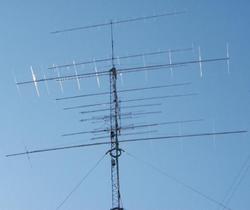 ARRL 2014 September VHF Contest Results Available: Complete
ARRL 2014 September VHF Contest Results Available: Complete 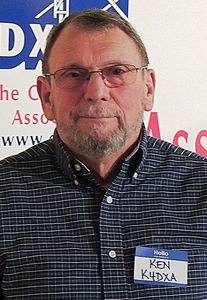 Past QSL Bureau Manager, Carolina DX Association President Ken Boyd, K4DXA, SK: Kenneth W. Boyd, K4DXA (ex-WA4UNZ), of Mint Hill, North Carolina, died February 16 following a brief illness. He was 69. Boyd served for 6 years as the W4 single-letter QSL Bureau manager, and as the current and previous (1988-1992) president of the Carolina DX Association. Boyd was licensed in 1973 and was an ARRL Life Member. Roanoke Division Vice Director Bill Morine, N2COP, a former North Carolina Section Manager, called Boyd a "ham's ham" and an inspirational leader as head of CDXA. He was a veteran of the US Air Force and attended Clemson University. After serving in the military Boyd worked for IBM from 1969 until 2002. He held DXCC Honor Roll. Survivors include his wife Bev, KE4EHB, and three sons.
Past QSL Bureau Manager, Carolina DX Association President Ken Boyd, K4DXA, SK: Kenneth W. Boyd, K4DXA (ex-WA4UNZ), of Mint Hill, North Carolina, died February 16 following a brief illness. He was 69. Boyd served for 6 years as the W4 single-letter QSL Bureau manager, and as the current and previous (1988-1992) president of the Carolina DX Association. Boyd was licensed in 1973 and was an ARRL Life Member. Roanoke Division Vice Director Bill Morine, N2COP, a former North Carolina Section Manager, called Boyd a "ham's ham" and an inspirational leader as head of CDXA. He was a veteran of the US Air Force and attended Clemson University. After serving in the military Boyd worked for IBM from 1969 until 2002. He held DXCC Honor Roll. Survivors include his wife Bev, KE4EHB, and three sons.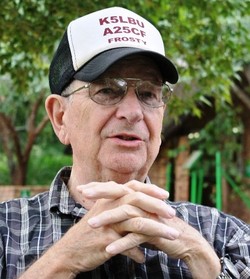 DXpeditioner, Expert Amps Owner Charles "Frosty" Frost, K5LBU, SK: DXpeditoner and Expert Amps founder Charles "Frosty" Frost, K5LBU, of Missouri City, Texas, died on his birthday, February 14, after an illness. He was 74 and an ARRL Life Member. A member of the
DXpeditioner, Expert Amps Owner Charles "Frosty" Frost, K5LBU, SK: DXpeditoner and Expert Amps founder Charles "Frosty" Frost, K5LBU, of Missouri City, Texas, died on his birthday, February 14, after an illness. He was 74 and an ARRL Life Member. A member of the 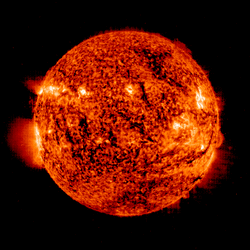 The latest prediction for solar flux is 120 on February 19, 115 for February 20-21, 120 for February 22-24, then 125 and 135 on February 25-26, 130 for February 27-28, 125 for March 1-5, 120 on March 6, and 115 for March 7-14. Solar flux then rises to 135 for March 23-25.
The latest prediction for solar flux is 120 on February 19, 115 for February 20-21, 120 for February 22-24, then 125 and 135 on February 25-26, 130 for February 27-28, 125 for March 1-5, 120 on March 6, and 115 for March 7-14. Solar flux then rises to 135 for March 23-25.







